Även om vi inte har någon offentlig Pride-månad i Sverige, tänkte vi ändå köra lite Pride-tema på bloggen och våra andra sociala kanaler för att fira. Bland annat genom att köra lite flagg-historia! Det finns mängder av flaggor och vi fattar att det kan vara svårt att kunna alla eller förstå varför alla behövs. Om det är så att just du inte förstår varför alla flaggor finns vill vi uppmuntra dig till att läsa vår flagg-serie och lägga några på minnet.
Olika flaggor och begrepp har olika värde för varje person, så det är svårt för oss på Sexperterna att uttala oss varför alla flaggor behövs. Men på samma sätt som att man kan må bra av att få ett namn eller begrepp på sin sexualitet, kan man känna sig sedd och bekräftad av att just den flaggan som hänger ihop med sin sexualitet och identitet. Just därför är det så bra att det finns flaggor för massa olika begrepp. Att få se sin flagga någonstans eller själv ha en i handen när man går i en Pride-parad är något som kan kännas stärkande, fint och helt rätt.
Och vem vet, kanske hittar du en beskrivning som passar 100 % rätt för just dig? Eller så har du sett någon av flaggorna förut och kan nu lägga ihop den med den info vi presenterar. Oavsett hoppas vi att du lär dig något nytt. Och har vi missat någon flagga? Maila oss så lägger vi till den <3
Information om de olika flaggorna kommer ifrån Wikipedia och Cade Hildreths instagram.
Bilderna kommer ifrån Wikipedia och Michelle Visages instagram.
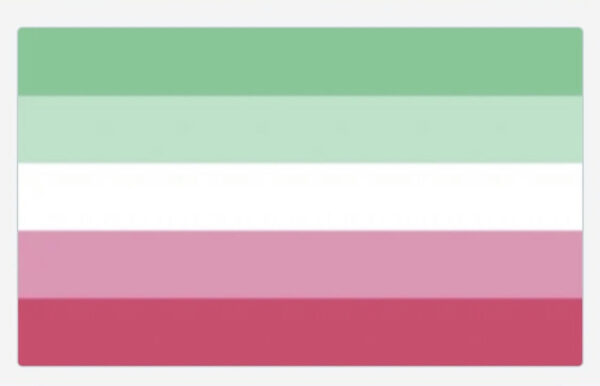
The Abrosexual flag
Abrosexual refers to an individual whose sexuality is changing or fluid. For example, someone could be gay one day, then be asexual the next, then polysexual the next. While it is possible—and even common—for a person’s sexual identity to shift or change in some way throughout their life, an abrosexual person’s sexuality may change more frequently, over the course of hours, days, months, or years. Because of their inconsistent attraction, some abrosexual people may not feel compelled to seek out a relationship or may prefer a wavership.
The timing of the fluctuations is different for every person; for some the fluctuations may be erratic and for others they may be regular. The sexualities that a person fluctuates between also varies. Some abrosexual people may be fluid between all sexualities, while others may only be fluid between a few.
The romantic equivalent of abrosexual is abroromantic (or abromantic).Abrosexuality is sometimes considered part of the asexual spectrum.Resexual is under the umbrella of Abrosexual, but changes more frequently.
Flag designer is unknown
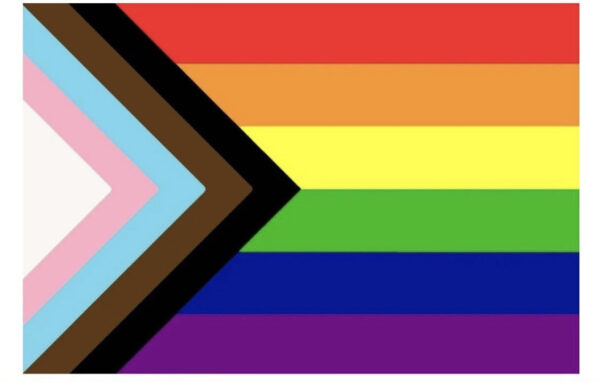
The Modern Pride Flag
Given the evolving nature of the LGBTQ+ community and society at large, the modern pride flag integrates many of these flags into one. Thankfully, it has been redesigned to be more substantially more inclusive.
The modern pride flag now includes stripes to represent the experiences of people of color, as well as stripes to represent people who identify as transgender, gender nonconforming (GNC) and/or undefined.
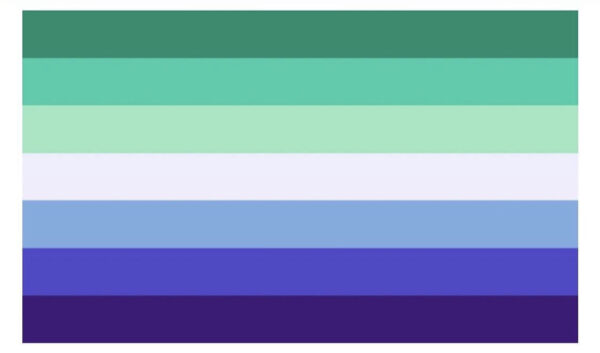
The Gay Men Pride Flag
The gay men’s pride flag is another lesser known pride flag. It features different shades of green, blue and purple.
This modern gay men’s pride flag is a revamp of an earlier gay men’s pride flag that featured a range of blue tones. That version was problematic because it used colors that were stereotypical of the gender binary.
This updated flag is inclusive of a much wide ranger of gay men, including but not limited to transgender, intersex, and gender nonconforming men.
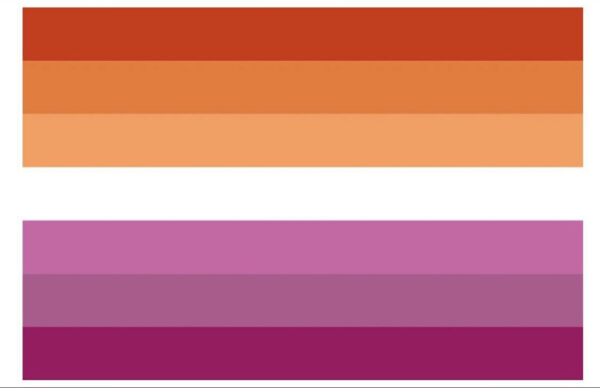
The Flag for the Lesbian Community
The lesbian flag is one of the flags fewer people know about. This flag features different shades of pink and sometimes comes with a red kiss on it to represent lipstick lesbians.
This flag was created by Natalie McCray in 2010. Some lesbians oppose this flag because of its exclusion of butch lesbians but no other flag has as much popularity as this one.
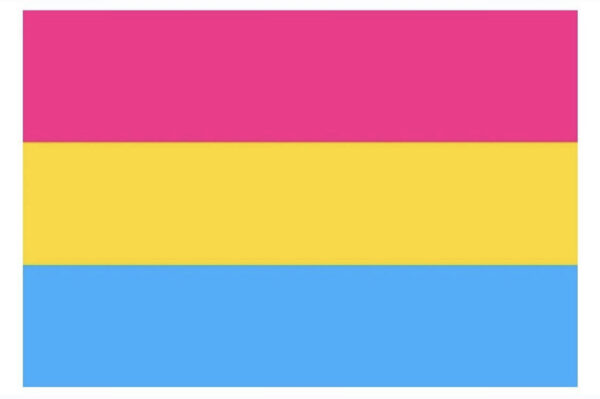
The Pansexual Flag
The flag that symbolizes the pansexual community was created in 2010. Pansexuality represents those people who feel attracted to a person without thinking about gender. This means that they can feel attraction to those who identify as women, men, both or neither.
The pink on the flag represents attraction to women, blue represents attraction to men, and yellow stands for attraction to those who don’t identify with either gender.
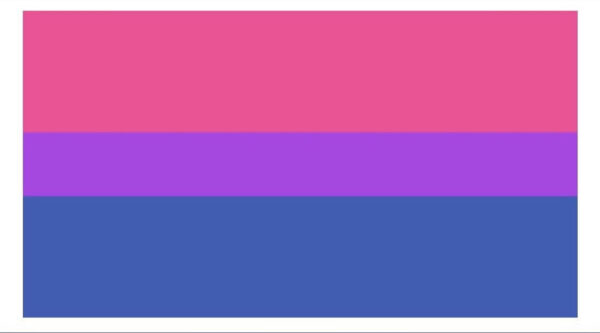
The Bisexual Pride Flag
The bi pride flag was created in 1998 by Michael Page. His idea for the flag represents pink and blue blending to make purple. The way that bisexual people can blend into the straight community and the gay community.
The colors of the flag also represent attraction to different genders. The pink symbolizes attraction to the same gender, while the blue represents attraction to a different gender. The purple represents attraction to two or more genders, the definition of bisexuality.
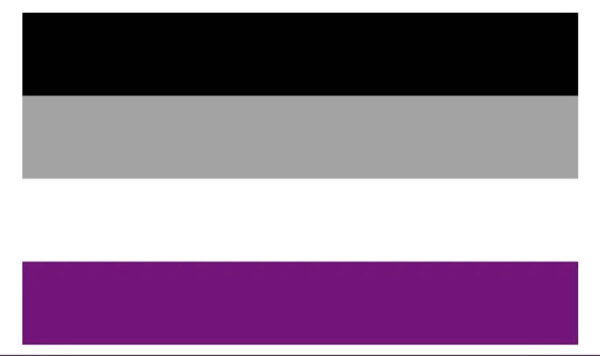
The Flag for the Asexual Community
The asexual flag was created in 2010 by the Asexual Visibility and Education Network. This flag represents the asexual community. Because this is a less common identity and asexuality can mean different things to different people, it is best to ask each individual what it means to them.
For some people, it may mean that they rely on other types of attraction instead of or in place of sexual attraction.
Once again, each color in this flag also represents something unique.Black stands for asexuality.Gray represents demisexuality, sexual attraction after an emotional bond.White stands for the allies of the community.Purple represents the entire community of asexual folks.
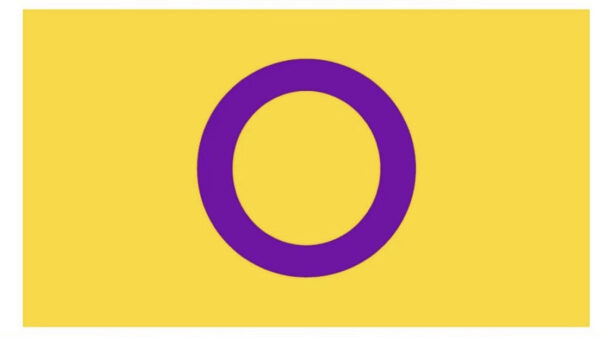
The Intersex Flag
This flag went through a variety of iterations before the current intersex flag emerged. Previous versions embraced the rainbow that is often associated with queer pride, while others used colors like blue and pink, which are found on the transgender flag.
In 2013, Morgan Carpenter chose the colors yellow and purple for the intersex flag. Morgan moved away from the rainbow symbolism and selected these colors because neither is associated with the social constructs of the gender binary.
The circle, perfect and unbroken, represents the wholeness of intersex people. It is a reminder that intersex people are perfect the way they are or choose to be.
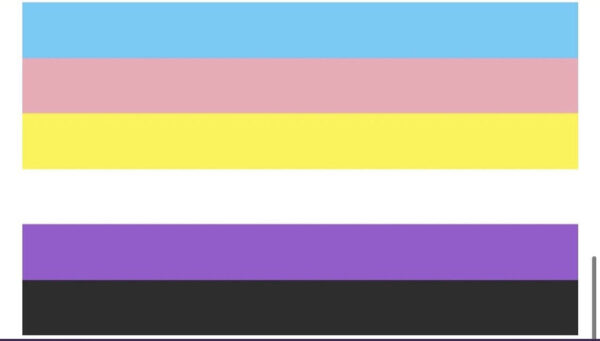
The Nonbinary Trans Flag
Up to this point in history, people who identified as both nonbinary and trans either had to use both flags or use neither. Now, nonbinary trans folks have their own unique flag to fly with pride.
Naturally, most transgender people would like to be inclusive of nonbinary people and visa versa. Thus, this new flag embraces both of these identities in a single six-striped flag.
This nonbinary trans flag is a combination of the colors of the trans pride flag and the nonbinary pride flag, merged into one.
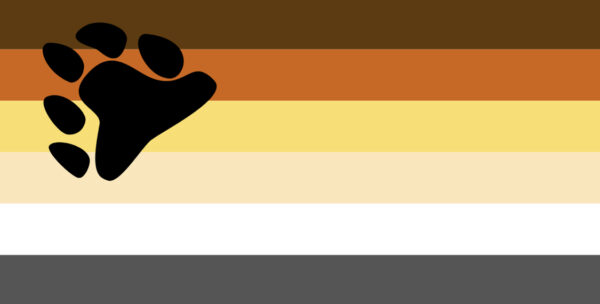
The international Bear Brotherhood Flag
The International Bear Brotherhood Flag was designed to represent the bear subculture within the LGBTQI+ community. The colours of the flag are meant to include the colours of the furs of animal bears throughout the world, not necessarily referring to human skin and hair colour tones: Dark brown, orange/rust, golden yellow, tan, white, gray, and black. The flag was designed with inclusion in mind.The gay bear culture celebrates secondary sex characteristics such as growth of body hair and facial hair, which is typically considered a ”bear” trait.
Craig Byrnes created the Bear pride flag in 1995.
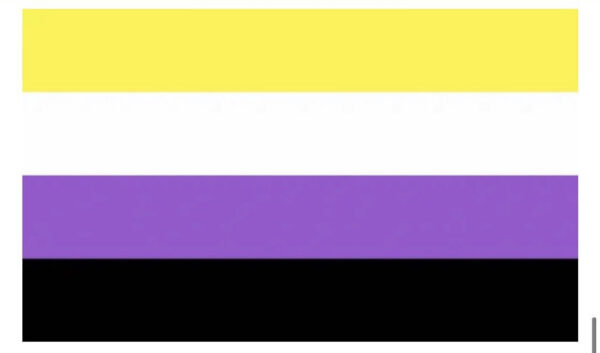
The Nonbinary Pride Flag
In 2014, Kye Rowan created the nonbinary pride flag. The colors of the nonbinary flag are yellow, white, purple, and black. The colors each symbolize a different subgroup of people who identify as nonbinary.
Yellow signifies something on its own or people who identify outside of the cisgender binary of male or female. White, a color that consists of all colors mixed together, stands for multi-gendered people. Purple, similar to the lavender color in the genderqueer flag, represents people who identify as a blending of male and female genders.
Finally, black (the absence of color) signifies those who are agender or who feel they do not have a gender.
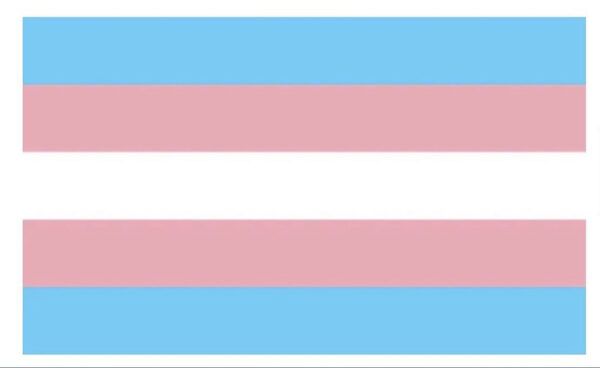
The Transgender Flag
There are more than 1.4 million trans adults living in the U.S. Violence against the queer community affects trans people of color the most.
This is why the trans flag is so important. The trans community needs representation and resources to be visible without fear.
The flag was first created in 1999 by Monica Helms, a transgender woman. Pink and blue represent girls and boys respectively. The white stands for those in transition or those who don’t feel identified with any gender.
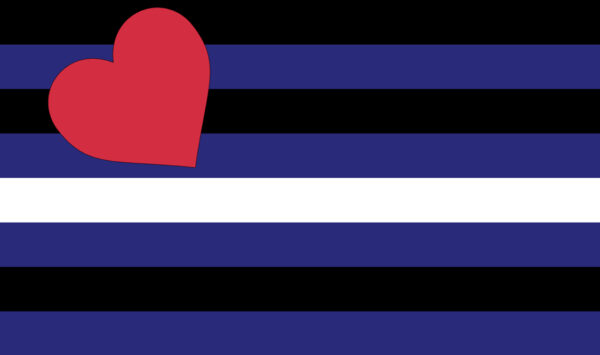
The Leather Pride Flag
The leather pride flag is a symbol used by the leather subculture since the 1990s. It was designed by Tony DeBlase, and was quickly embraced by the gay leather community. It has since become associated with leather in general and also with related groups such as the BDSM community.
The flag is composed of nine horizontal stripes of equal width. From the top and from the bottom, the stripes alternate black and royal blue. The central stripe is white. In the upper left quadrant of the flag is a large red heart. I will leave it to the viewer to interpret the colors and symbols.
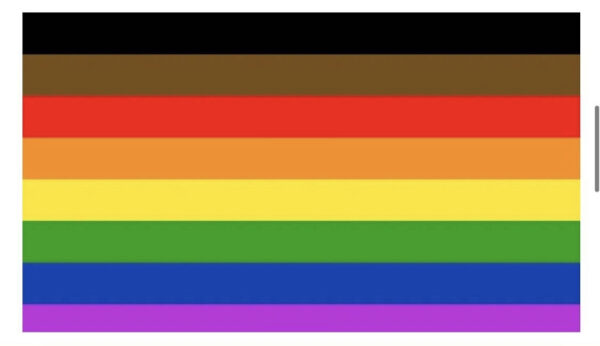
The Philadelphia Pride Flag
The Philadelphia pride flag came about in response to the demand for more inclusivity across the LGBTQ+ community. The flag launched in 2017 as part of the “More Color More Pride” Campaign in Philadelphia.
The addition of black and brown stripes to the traditional pride flag symbolized people of color who are often not represented in the queer community.
Lena Waithe’s choice to wear the Philadelphia Pride Flag as a cape at the 2018 Met Gala is the perfect example of this type of inclusion. She is a powerful advocate for black people within the entertainment industry and this flag spiked in popularity after she elevated its visibility.
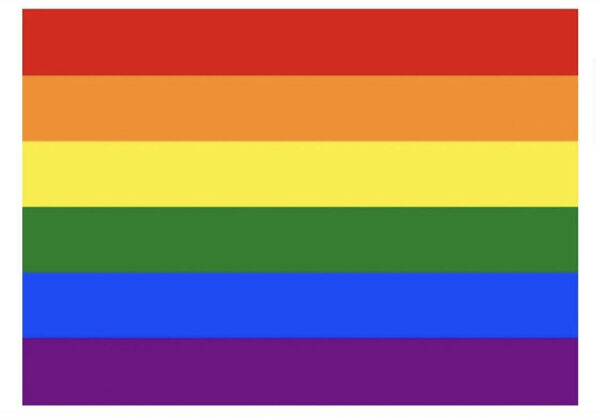
The 6-Color Pride Flag
One of the most well known and used of the LGBT flags throughout history has been the 1979, six-color flag. This flag includes the colors red, orange, yellow, green, indigo, and violet on it.
Hot pink wasn’t included in the fabrication of these flags, because the fabric was hard to find as the demand for the flag started to rise. The turquoise color was also taken off the flag to keep an even number of colors.
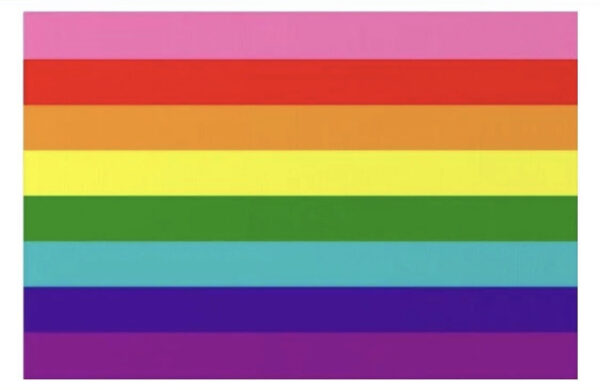
THE FLAG THAT STARTED IT ALL….
The history of the original pride flag should be in textbooks and taught in school. It was created by Gilbert Baker in 1977. Tasked by Harvey Milk, a historic figure in the fight for LGBTQ rights, to create a flag for the queer community, Baker created a rainbow flag with eight different colors.
Inspired by the classic song “Over the Rainbow” from the 1939 film The Wizard of Oz, Baker created a rainbow flag to represent LGBTQ folks. Each color in the flag also had a specific meaning.
Hot pink symbolizes sex.Red equals life.Orange symbolizes healing.Yellow stands for sunlight.Green represents nature.Turquoise equals magic and art.Indigo stands for serenity.Violet represents the spirit of LGBTQ people.






